
In 2007, Maria Hadden’s landlord abandoned the building she lived in in Rogers Park, so just about a month after moving in, Hadden found herself stuck in a distressed condominium building.
Somehow, that was the inciting incident that led her to be in the basement of Thorek Hospital, 850 W. Irving Park Road, on Nov. 29, preaching the good news of participatory budgeting to a group of about 30 Uptown residents.
Hadden was at Thorek to help the 46th Ward take the next step in a participatory budgeting process that will culminate in May with a ward-wide vote about how to spend more than $1 million in discretionary funds.
Participatory budgeting was brought to Chicago by 49th Ward Ald. Joe Moore. It is a program in which residents decide how their ward will spend the $1.3 million each ward gets every year to spend on infrastructure improvements.
In wards without participatory budgeting the alderman decides how these funds will be spent, but in the 49th Ward, and now in three other wards in Chicago, residents get to suggest ideas and vote on how the money will be spent. The money can only be spent on infrastructure improvements like resurfacing streets and alleys, repairing sidewalks, replacing curbs and gutters and putting in new street lights.
Last month, in a series of public meetings, 46th Ward residents offered hundreds of suggestions, and now, beginning with last week’s meeting, 30 community representatives will narrow those suggestions down to a list of 50 or so possibilities, which will then be put to a vote among all 46th-Ward voters.
In many ways it is thanks to Hadden they have such an opportunity.
After her landlord abandoned her building, the following months of legal battles and collaboration with her neighbors gave Hadden a taste for organizing and a thirst for community engagement. So in 2009, when she saw a sign that welcomed her to “come help the alderman spend $1 million” she jumped at the chance to get involved.
“Seeing an elected official saying ‘hey come be engaged with me’ was really refreshing,” Hadden said.
Hadden got involved in Ald. Joe Moore’s (49th) first year of participatory budgeting, which marked the first time the unique process was tried in Chicago.
Now participatory budgeting has spread to New York and California, and this year it has expanded in Chicago to include the 45th-, 46th- and 5th wards, along with Moore’s 49th Ward.
Hadden is settled now in a different building in Rogers Park, but she is still infected with the advocacy bug.
After her first year working on participatory budgeting, Hadden reached out to the non-profit organization The Participatory Budgeting Project, and eventually became the group’s project coordinator in Chicago. In that role, Hadden has been going around the city giving presentations to any alderman who will listen about participatory budgeting. At the end she had brought three new recruits to her cause.
The Participatory Budgeting Project is a New York-based organization founded by American and Canadian researchers and activists with funding from various organizations. The mission of the organization is to promote participatory budgeting in North America.
“We went out to people and said ‘do want to try this?’” Hadden said.
On Nov. 29, Hadden was in Ald. James Cappleman’s 46th Ward, giving a presentation to a group of community members who will lead the ward’s inaugural participatory budgeting effort.
The 30 or so Uptown residents separated in to five groups at the meeting: Public safety, roads, public art, transportation and beautification, and set about deciding on the items that will be voted on next May by 46th Ward voters.
“It’s a chance to get involved in politics, see how it works, see how we can affect change, then we’re going to get on these committees and drill down,” said community representative Steve Kungis.
In the coming months the smaller groups, each with about six people in them, will meet twice and communicate frequently with Cappleman’s office, in an effort to whittle down the hundreds of ideas suggested by their fellow residents into a workable list of 10 per committee. On February 15, 2013 the groups will present their finalized lists and prepare to present their ideas to the public.
At Thursday’s meeting, residents discussed ideas for more outdoor lighting to make the streets safer, new community gardens and new bike lanes among dozens of other ideas.
Hadden described this early step as “the fun part.”
“These people who are community representatives, they’re taking all of these ideas, some of them might not seem like the best ideas, but some of them are good ideas … and they’re taking the responsibility and accountability to act in the best interest of their community. It’s basic grass roots democracy” Hadden said.
Dana Fritz, who heads the participatory budgeting program in Cappleman’s office said that grass roots democracy is exactly what the alderman is looking for.
“It really fits his ideas about what government should be, it increases transparency, it increases community involvement and it gives people a voice in how they get to spend their tax dollars,” said Fritz. “It’s community involvement, but it also develops community. It brings people from all over the ward, people who might not necessarily know each other, together.”
Paul Bucklaw, who lives a few blocks from the hospital, said he was at the meeting to meet other members of his community, and just get involved.
“It’s good to see how some of this money is being spent, and there are certain things that need to be done,” Bucklaw said.
Related articles
 Participatory Budgeting in the 46th Ward(transitized.com)
Participatory Budgeting in the 46th Ward(transitized.com)


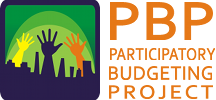





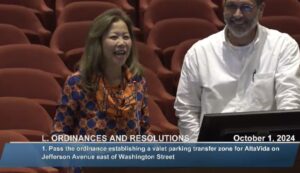
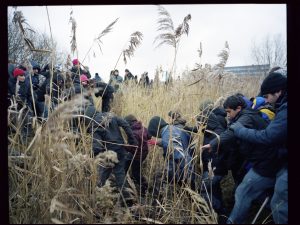
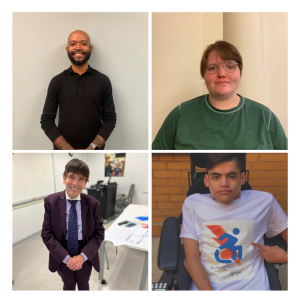

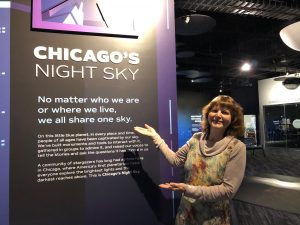
Be First to Comment